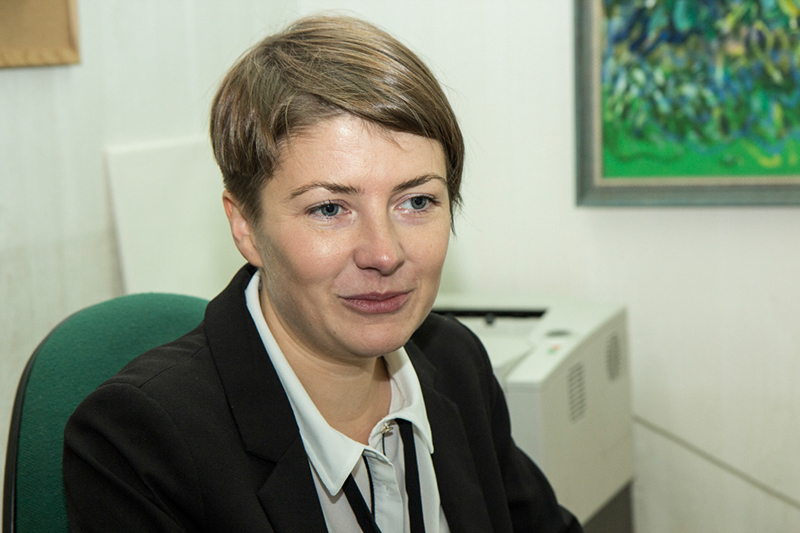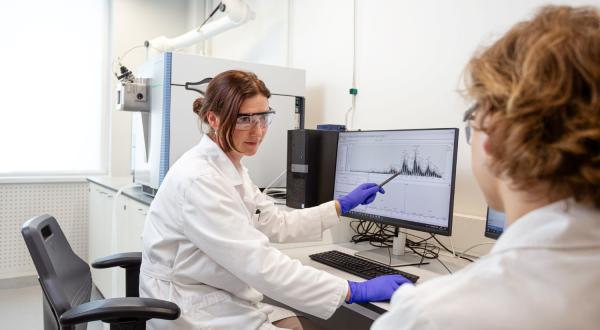Last Duke of Courland's cause of death revealed
The last Duke of Courland and Semigallia Peter von Biron (1724–1800) departed this life in early January 217 years ago. Documents found in the European digital library have given Ieva Lībiete, medical historian and lecturer at RSU Institute of the History of Medicine the chance to draw closer to the secret hidden by the sands of time as to the true cause of the Duke’s death. Records reveal that the death of the Duke of Courland was caused by mercury treatment, which was popular at the time and not by some incurable disease as maintained previously..
Back in 1795 when the Duchy of Courland was enveloped in clouds of heightened political tension, Peter von Biron abdicated his throne for a substantial compensation from the Russian Empire in the amount of 2 million roubles for his Courland estate and left his homeland together with his family to devote the twilight years of his life to travelling around Europe, acquiring residential estate and collecting art.
Following a turbulent youth and two unsuccessful marriages, his new wife Dorothea dazzled European courtyards with her stunning beauty and wisdom. Peter von Biron enjoyed all the trappings of wealth – he was one of the richest men in Europe and despite some inconvenience caused by the lost title and doubts as to his noble origin, he sorted everything out with huge sums of money.
Despite his advanced age (bearing in mind that the average life expectancy at that time was approximately 40 years) and unhealthy lifestyle, the former Duke of Courland was in enviably good health which is confirmed by a document found by Lībiete in the archive. It is a letter dating back to October 1786 from William Bailey, physician to Frederick the Great, practising in Berlin, to one of the most outstanding medical practitioners of the time, a medical authority – physician to the King of Scotland William Cullen, in which Bailey requested his eminent colleague for advice regarding treatment of some patient – a nobleman from Courland. Several facts disclosed in the letter lead to the conclusion that the patient meant in the letter is Peter von Biron who had reached the age of 62. The letter contains a detailed description of the condition of his patient's health and last two years’ anamnesis.
The patient was rather corpulent, suffered from digestive problems, dyspnoea, oedema, haemorrhoids, nosebleed and a rash of unknown origin. According to the contents of the letter, the only issue that worried the patient himself was the ultimate one which he treated with excessive lemon juice, white vine and sugar baths. Bailey also expressed concern regarding the nobleman’s insatiable eating habits which could have contributed to his health disorders. The letter contains a comprehensive description of medicines received by the noble patient – including strong drugs and comparatively harmful substances – saltpetre, vitriol, camphor and even toxic lead and mercury preparations. As awful as it might sound, the medical preparations listed in the letter were an 18th century “golden standard” of medicine.
Despite the intense treatment (obviously the poison doses were rather negligible) the Duke lived for another 14 long and happy years and any further information regarding his health is only found in records dated the year of his death. Lībiete had the luck of discovering these records in Czech and Polish archives. The last years of his life Peter von Biron spent on his estates in Silesia, on the current border of the Czech Republic and Poland. The archives contain a letter written somewhere at the end of 1799 where the abbot of Neustad’s Holy Order Monastery, monk Aductus Paul addresses the Duke’s widow Dorothea with a request to pay the costs of the Duke’s treatment. The letter gives some insight into the last months of the Duke’s life. The monk does not specify which particular diseases have been treated, but notes that he has been repeatedly asked to visit Nachod Castle, located nearby, to relieve the Duke’s pain, together with the nobleman’s courtyard surgeon. They were successful in improving his health and the monk had won the Duke’s favour. The recovery of the Duke was followed by a lavish party and beggars’ feast organised in honour of the occasion.
Nevertheless, soon after, he fell ill again and the monk continued to treat him until the arrival of von Mucius, the owner of Gellenau Castle, located nearby, who “thanks to his agility succeeded in gaining the full trust of the Duke, who left the residence and purchased an apartment in Gellenau”. The helping hand of the dexterous friend von Mucius turned out fatal for the Duke, since he departed this life while staying at Gellenau. The Duke’s cause of death is revealed in two medical reports of Prague-based physicians retained to this day by the Czech archives.
For four months the Duke was diligently treated with large doses of laxative drugs and some alchemical substance – philosophic golden salt. Biron, most probably, could have survived this treatment as well, if not for the “stupid, impudent and brave charlatans” who gathered around his sick-bed in the middle of September and launched the treatment of his non-existent syphilis with mercury. The prescribed dose was too high and the symptoms of severe poisoning appeared soon after. To correct the mistake the “charlatans” made the Duke take a strong laxative drug resulting in complete exhaustion. For over a week Peter von Biron suffered from severe effects of mercury poisoning and he died on 10 January 1800. On the last day of his life physicians arrived from Prague, however they could no longer help. The invited practitioners wrote a rather angry medical report, in which they turn with indignation to the non-identified “charlatans” who have for no reason and contrary to the principles of medical practice prescribed to the Duke mercury in fatal doses. Although the report contains a strong commitment to testify against these charlatans in court, there are no records proving the fact of anyone being brought to justice or sentenced.
 According to Lībiete, “heroic medicine” is the hallmark of the 18th century”. Each therapy required immediate effect which accounted for the dramatic nature of the chosen forms of treatment – bloodletting, pucking, purging, enema and also extremely strong or toxic substances whose side effects were interpreted as the treatment process. Although with a slightly different approach to that of antiquity, sickness and health were still related to humoral theory whereby the functioning of the human body is comprises a mix of four liquids: black bile, yellow bile, blood and phlegm. In the event someone fell ill, it was considered that humoral (fluid) balance has been destroyed, the quality of the humor has been reduced or circulation of these fluids in the body disturbed. Attempts to restore health were made by affecting these fluids. Bloodletting, most likely, was the most common procedure which, according to historical records, was practised in Riga even at the beginning of the 20th century. Patients were treated with mercury to invoke salivation that was caused by poisoning by these toxic fluids. Physicians interpreted it as the manner of getting rid of excess phlegm.”
According to Lībiete, “heroic medicine” is the hallmark of the 18th century”. Each therapy required immediate effect which accounted for the dramatic nature of the chosen forms of treatment – bloodletting, pucking, purging, enema and also extremely strong or toxic substances whose side effects were interpreted as the treatment process. Although with a slightly different approach to that of antiquity, sickness and health were still related to humoral theory whereby the functioning of the human body is comprises a mix of four liquids: black bile, yellow bile, blood and phlegm. In the event someone fell ill, it was considered that humoral (fluid) balance has been destroyed, the quality of the humor has been reduced or circulation of these fluids in the body disturbed. Attempts to restore health were made by affecting these fluids. Bloodletting, most likely, was the most common procedure which, according to historical records, was practised in Riga even at the beginning of the 20th century. Patients were treated with mercury to invoke salivation that was caused by poisoning by these toxic fluids. Physicians interpreted it as the manner of getting rid of excess phlegm.”
In the 18th of century the number of educated medical practitioners per capita was extremely small and qualified medical treatment was available mostly to the well-off part of the society. The rest, commonly, were deprived of such a possibility and were forced to turn to self-proclaimed practitioners which allowed charlatanism to flourish. Nevertheless, it should be also noted that a patient’s wealth frequently also accounted for particularly “heroic” treatment, since, first of all, they could afford it and secondly, numerous drugs and procedures gave the illusion of exquisite and costly treatment. Therefore in most cases the lucky ones were those who could not afford such treatment.
Lībiete notes that the story of the Duke’s cause of death allows us to draw parallels with the contemporary perception of medicine, “Medical history teaches us to retain a critical perception of modern medical achievements. When giving lectures, I try to bring this idea also to my students. Although it may be a pure illusion that we have reached the peak of knowledge and technologies, one should remember that it may turn out that in 10–20 years our contemporary methods and perception of medical treatment will be perceived as completely outdated or even wrong. Historically the development of medicine has never been an exponential curve; instead it is irregular, characterised by a series of oscillations and unexpected turns.”
Related news
 RSU doctoral research explores the potential of medicinal plants in antibacterial therapyDoctoral Students' Stories, Research
RSU doctoral research explores the potential of medicinal plants in antibacterial therapyDoctoral Students' Stories, Research


